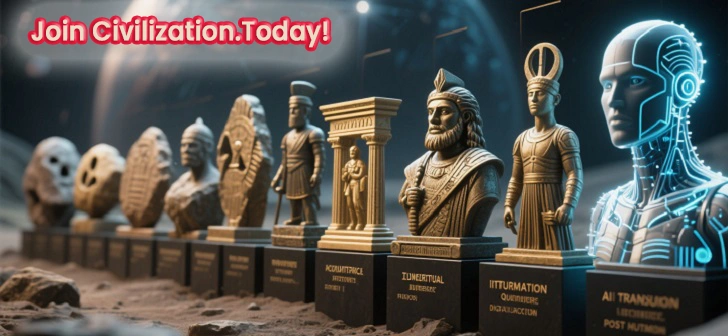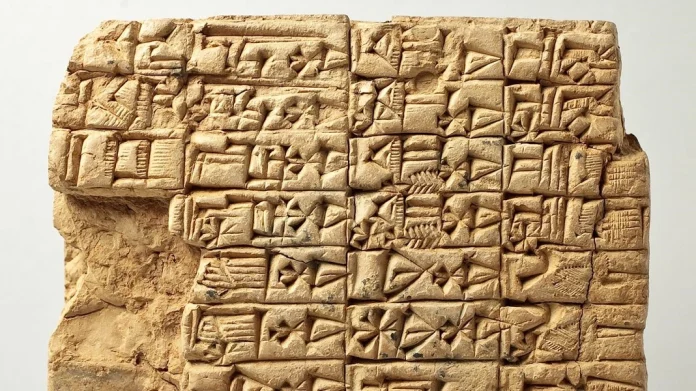The Sumerian civilization is widely recognized as one of the earliest and most influential cultures in human history. Emerging in Mesopotamia around 4500 BCE, the Sumerians not only built the first known cities but also laid the foundation for many aspects of modern society—law, agriculture, architecture, and most notably, writing. Their invention of cuneiform, the first known writing system, transformed how humans communicated, recorded history, and managed complex societies. This groundbreaking achievement shaped the trajectory of civilization for thousands of years.
The Birthplace of Civilization
The Sumerian civilization flourished in the fertile lands between the Tigris and Euphrates Rivers, a region later called the “Cradle of Civilization.” This area, known as Sumer, included prominent city-states such as Uruk, Ur, Lagash, and Eridu. The abundance of water and fertile soil supported large-scale farming, which in turn enabled population growth and urbanization.
By around 3000 BCE, Sumer was a network of thriving city-states, each with its own ruler, patron deity, and unique cultural practices. However, despite political independence, these cities shared a common language, religion, and innovations that united them under the broader umbrella of Sumerian civilization.
Cuneiform: The First Writing System
The crowning achievement of the Sumerians was undoubtedly the invention of cuneiform around 3200 BCE. Initially developed for accounting and record-keeping, this writing system began as pictographs—simple drawings representing goods like grain, livestock, or tools. Over time, these symbols evolved into wedge-shaped marks made on clay tablets using a reed stylus.
The word “cuneiform” itself comes from the Latin word cuneus, meaning “wedge.” This system allowed scribes to record not only economic transactions but also laws, literature, and historical events. Through cuneiform, the Sumerians left behind an enduring record of their thoughts, beliefs, and daily life.
Why Writing Changed Everything
Before the advent of writing, human communication was limited to oral tradition. Stories, laws, and trade agreements had to be memorized and passed down verbally, often changing with each retelling. The Sumerian civilization broke this limitation. Writing provided a reliable and permanent method of storing information, which allowed for:
- Complex Administration. City-states could manage resources, taxes, and trade more effectively.
- Legal Systems. Laws could be codified, reducing disputes and ensuring consistency.
- Cultural Preservation. Myths, hymns, and epic tales like The Epic of Gilgamesh could be recorded for future generations.
- Educational Systems. Writing allowed the creation of schools and the professional class of scribes.
In essence, writing enabled the growth of organized states and complex societies, marking a turning point in human history.
Other Achievements of the Sumerian Civilization
While cuneiform remains their most famous contribution, the Sumerians were pioneers in numerous other fields:
- Irrigation Systems. They developed advanced canals and dikes to control water flow, ensuring consistent agricultural output.
- Mathematics. The Sumerians used a base-60 numbering system, which still influences how we measure time and angles today.
- Architecture. Monumental structures like the ziggurats served as both temples and administrative centers.
- Law and Governance. Their city-states had organized governments with officials, councils, and early forms of codified law.
- Art and Craftsmanship. Intricate jewelry, pottery, and sculptures reflected both skill and cultural identity.
The Epic of Gilgamesh: A Literary Legacy
Among the most significant literary works from the Sumerian civilization is The Epic of Gilgamesh, often considered the world’s first great piece of literature. Written in cuneiform on clay tablets, it tells the story of King Gilgamesh of Uruk, his adventures, and his quest for immortality. Beyond entertainment, it explores themes of friendship, mortality, and human ambition—topics that remain relevant today.
Decline of the Sumerians
By around 2000 BCE, the Sumerians faced challenges from environmental changes, over-irrigation, and invasions from neighboring peoples, including the Akkadians and later the Babylonians. While the Sumerian political power waned, their culture and innovations endured, influencing Mesopotamian civilizations for centuries.
Even after the Sumerians ceased to exist as a distinct political entity, their writing system, mythology, and urban planning concepts continued to shape the ancient Near East. In fact, cuneiform was used for over 3,000 years, long after the last Sumerian city had fallen.
The Lasting Impact of the Sumerian Civilization
The Sumerian civilization laid the foundation for many elements of modern life. Their development of writing is arguably their most transformative contribution, enabling humanity to record knowledge, govern effectively, and build complex cultures. Without the Sumerian leap into written communication, the course of history might have been entirely different.
From their bustling cities to their intricate religious beliefs, the Sumerians were visionaries who turned a harsh Mesopotamian landscape into the first urbanized society. They proved that with innovation, organization, and creativity, human beings could not only survive but thrive in challenging environments.
Why the Sumerians Still Matter Today
In the digital age, we often take the concept of writing for granted. From texting friends to signing legal contracts, written communication is part of our daily lives. Yet, this seemingly ordinary act traces back over 5,000 years to the mud-brick cities of Sumer.
Studying the Sumerian civilization reminds us that human progress is cumulative. Every modern technology, every book, and every law builds upon the innovations of ancient societies. The Sumerians may be long gone, but their influence is embedded in the very fabric of human civilization.
Conclusion
The Sumerian civilization was more than just the inventors of the first writing system—they were architects of the human story. By creating cuneiform, they opened the door to recorded history, preserved knowledge, and cultural continuity. Alongside their advancements in agriculture, architecture, and governance, the Sumerians set humanity on the path toward the complex, interconnected world we inhabit today.
Their story is not just ancient history; it is a reminder that innovation has the power to change everything. And in the case of the Sumerians, it truly did.




